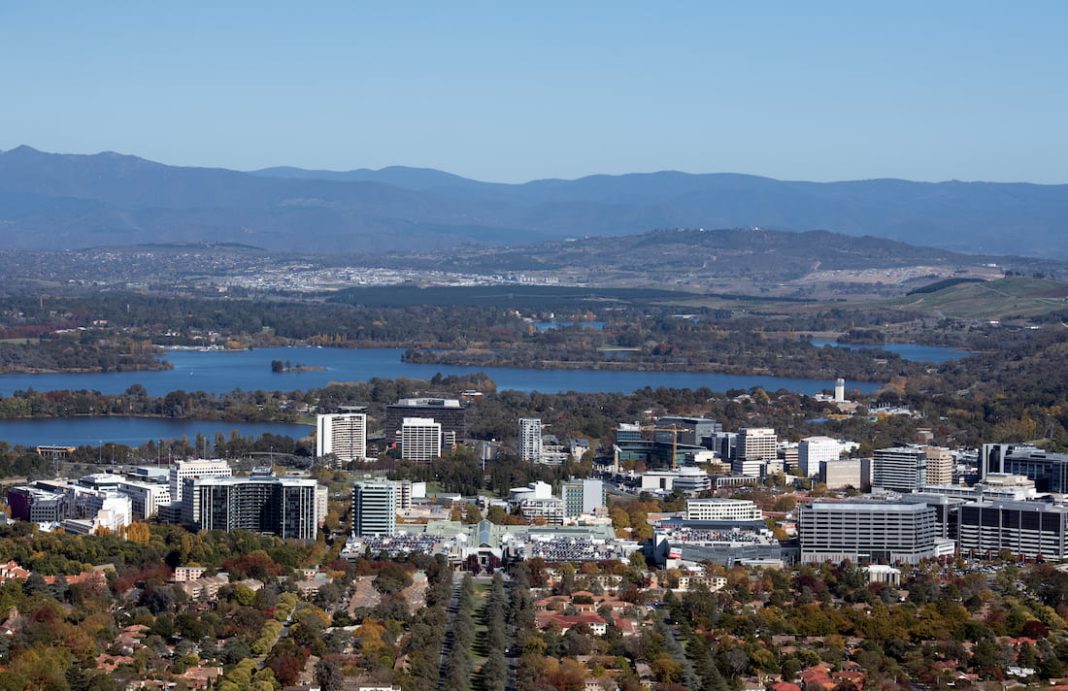Canberra’s apprentices and financially stressed renters are in line for cost-of-living support from the ACT’s pre-election budget.
Handing down his 13th budget as the territory’s chief minister on Tuesday, Andrew Barr said the economy was slowing and many parts of the community were enduring living costs pain.
A range of “targeted” cost-of-living measures are included in the ACT’s final budget before an election in October, such as one-off $250 payments for apprentices and trainees.
Energy rebates for low-income households have been bumped up by $50 in this financial year and the next, and the rent relief fund will be extended to more low-income households in financial hardship.
Sour economic conditions, high infrastructure and labour costs, and cost-of-living support measures have led to a bigger-than-expected deficit of $830.8 million estimated for 2023/24, heftier than the $442.7 million forecast at the last budget.
Deficits are then expected to shrink in the following two years before public finances claw back into the black in 2026/27, when a $79.7 million surplus is predicted.
The territory’s growth is expected to temper from three per cent in 2023/24 to 2.75 per cent in 2024/25, based on forecasts embedded in the budget.
Growth is then tipped to gradually return to long-run average of 3.75 per cent by 2027/28, as the household sector recovers and home-building picks up as interest rates fall, incomes improve and the population swells.
“While there are risks to the economic outlook associated with uncertainties around inflation and interest rates, the ACT economy remains robust and the outlook for economic activity is positive,” the budget papers said.
The ACT’s population has been growing quickly but the pace is expected to pull back, in line with lower forecasts for nationwide net overseas migration.
Still, Canberra’s population is expected to reach the 500,000 mark by 2027, and growing its housing stock at a faster rate remains a government priority.
In total, more than $285 million will be spent on housing over four years, including an extra $20 million for a fund to boost the supply of affordable rental and community housing.
Stamp duty exemptions will also be expanded and more dwelling sites are set to be released.
Despite higher interest rates and surging construction costs weighing on building activity, housing supply is tracking “marginally” ahead of population growth.
“This will support an increase in rental vacancy rates and an easing of growth in rents and purchase prices,” the budget papers said.
Key infrastructure projects include the Canberra hospital expansion and the light rail, with $50 million for the second stage to Woden announced ahead of the budget.
Like the rest of the country, the territory’s labour market has proved resilient to price pressures and higher interest rates, with the jobless rate lifting to 3.8 per cent in the year to May.
Plans to expand the commonwealth public sector workforce, flagged in the recent federal budget, should keep employment growing with the territory government forecasting a two per cent increase in 2024/25.
KEY BUDGET MEASURES
- ACT to continue its drug-checking service, an Australian first
- Affordable Housing Project Fund boosted from $60 million to $80 million
- Income threshold for Home Buyer Concession Scheme increases from $180,000 to $250,000
- Funding for a pilot community electrification program, providing grants for electrification upgrades to up to 350 eligible households
- One-off $250 payment to support local apprentices and trainees
- Electricity, water and gas rebate for low-income households upped from an annual rebate of $750 to $800
- Rebates of up to 50 per cent for pensioners on their general rate
- Value of vouchers available through the utilities hardship fund will be upped to a maximum of $300 per household
- $920 million over four years has been earmarked for new health spending, including works to complement the construction of the new North Canberra Hospital
- $100 million over four years has been earmarked for new education measures, including increased support to the Future of Education Fund which provides yearly one-off payments to low-income Canberra families
- For the first time, the budget included a wellbeing statement with six priority areas: housing; physical and mental health; women; early years; cost of living; and addressing marginalisation and disadvantage.
By Poppy Johnston in Canberra



